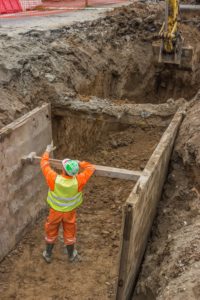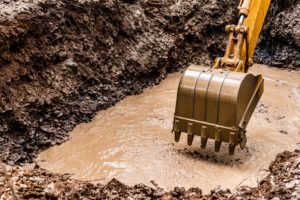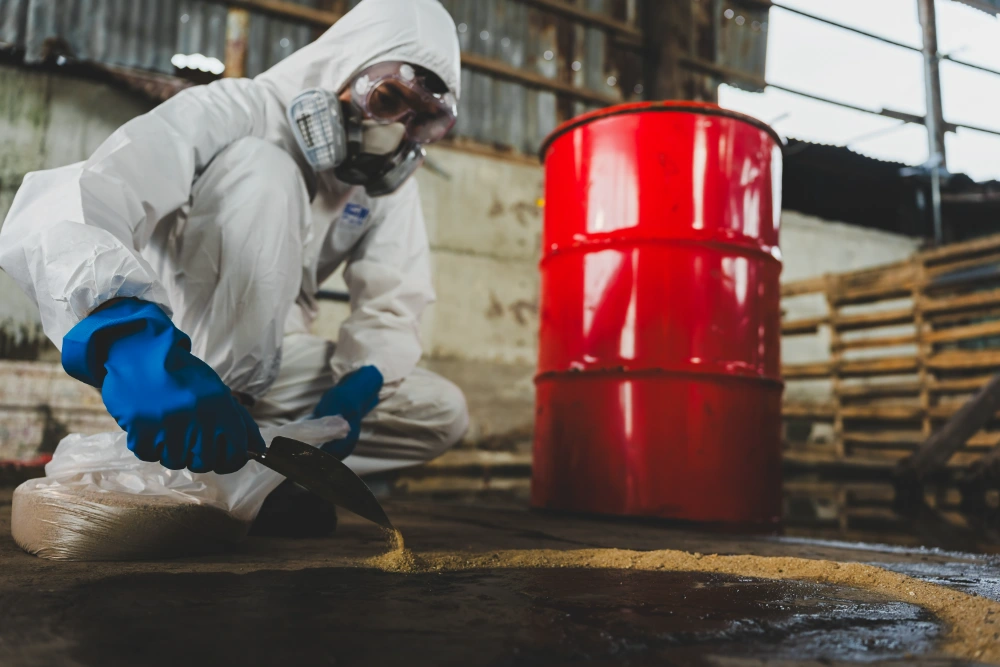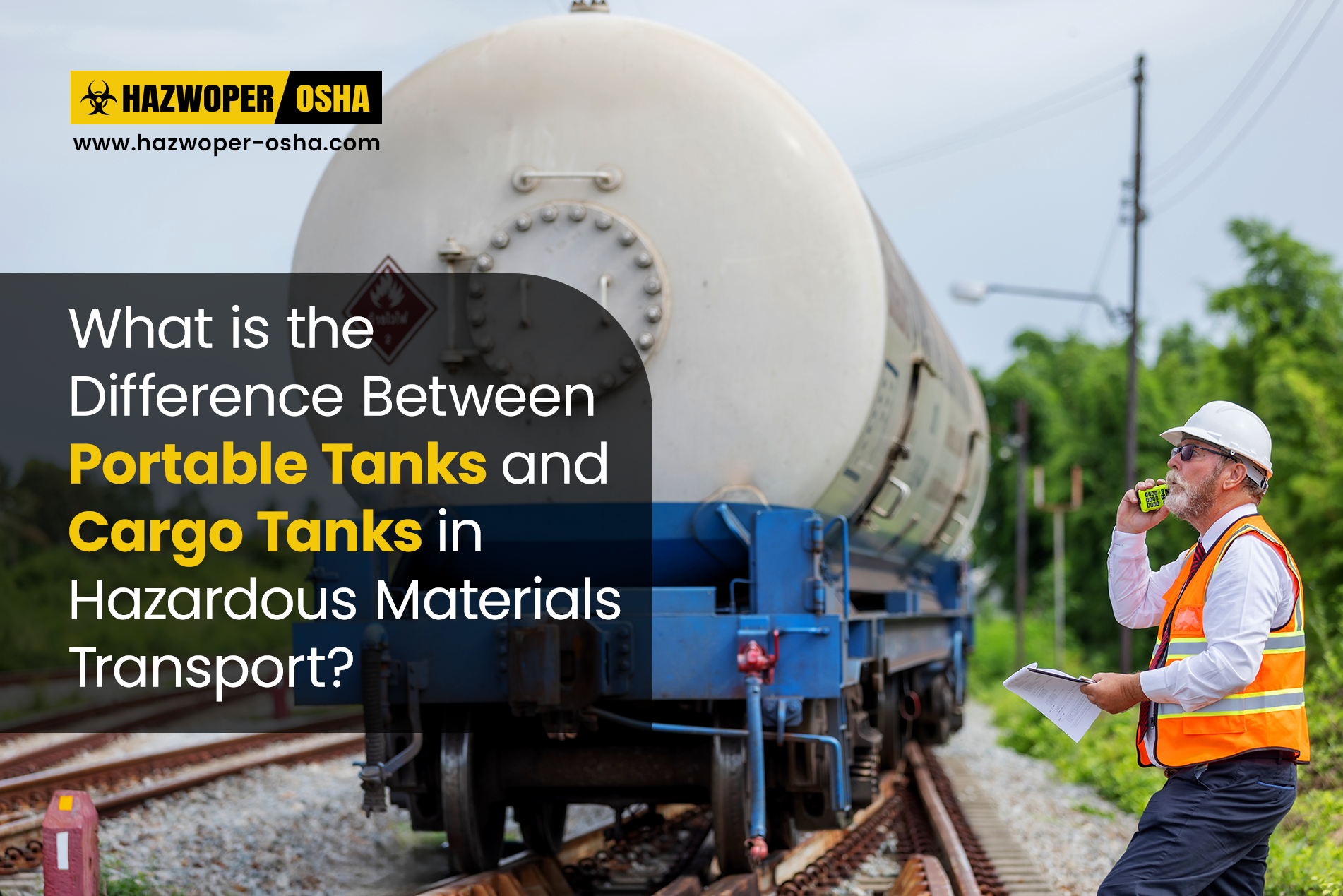The 8 Types of Trenching and Excavation Hazards
Trenching and Excavation hazards continue to be a prominent cause of worker injuries and fatalities in the United States. Between 2019 and 2021, 38 workers died due to trench collapses alone as cited in OSHA’s Fatality Inspection Data. According to the U.S. Bureau of Labor’s 2020 Census of Fatal Occupational Injuries Table A-9, 19 workers employed in construction suffered fatal injuries due to excavation and trench cave-ins in 2020. These numbers should raise a red flag for employers and employees and increase the need for safety awareness from trenching hazards at construction sites.

What is a Trench?
A trench is an excavation (or hole in the ground) where the depth is greater than the width.
One tried and tested method is to ensure workers receive adequate training on OSHA regulations and safe work practices in accordance with Federal OSHA Regulations 29 CFR 1926 Subpart P which provides guidance on specific excavation requirements and the use of protective systems for excavation and trenches.

Did You Know?There are three types of protective systems – Sloping, Shoring, and Shielding.
To Learn More Enroll In Our
OSHA Competent Person for Excavation, Trenching, and Shoring Training Course
Our OSHA Competent Person for Excavation, Trenching, and Shoring Training course has been developed by OSHA-authorized trainers and provides detailed guidance on soil classification, protective systems, and safe work practices in trenches in construction..
Trenches in Construction
Trenches are typically classified based on their purpose and depth. Here are a few types of trenches in construction.
Utility Trenches: Dug to install or repair utility lines such as water, sewer, or electrical lines. They are usually shallow but can vary in depth.
Foundation Trenches: Excavated to provide a base for building foundations. These trenches are deeper and require careful planning and preparation.
Drainage Trenches: Constructed to manage surface water or groundwater. They are designed to redirect water away from structures or areas prone to flooding.
Access Trenches: Used to provide access to underground structures such as basements or tunnels. They are often deeper and may require additional support.
Each type of trench has specific requirements for safety and construction practices to prevent cave-ins and other hazards.
Trenching and Excavation Hazards
Let’s discuss the eight commonly encountered trenching and excavation hazards that cause worker injury and death in the construction industry.Which of these conditions makes a trench cave-in more likely?
1. Trench Collapses or Cave-Ins
A trench collapse or a cave-in occurs when the walls of the trench or excavation site collapse inwards due to instability or improper use of safety techniques such as sloping or benching the sides of the trench, shoring or supporting the sides of the excavation, or placing a shield between the sides of the excavation/trench and the work area.
 Some of the most common reasons for trench or excavation collapses are attributed to unstable soil, vibrations due to machinery being used nearby, vibrations from heavy traffic passing close to the trench, flooding, heavy rainfall, and excessive pressure placed on the edge of a trench.
Some of the most common reasons for trench or excavation collapses are attributed to unstable soil, vibrations due to machinery being used nearby, vibrations from heavy traffic passing close to the trench, flooding, heavy rainfall, and excessive pressure placed on the edge of a trench.
Trench or excavation collapses result in workers being buried under tons of sand and rock, suffocating due to being smothered by soil, or suffering other lesser fatal injuries which can still put them in hospital and require injury leave.
Before excavation work begins, employers must ensure that a competent person inspect worksites daily before the start of each shift, and as needed thereafter (for example, a sudden heavy rainfall occurring after the pre-work inspection has taken place that could result in excess water gathered in the trench affecting soil stability).
2. Falling Hazard
Workers working in trenches and excavations are exposed to the hazard of falling into the trench or excavation. This is more common when workers must cross over excavations to get to the other side. Putting-up safety signs, installing guardrails for walkways that are 6 feet or higher from the bottom of the trench or the lower level, and/or placing barriers around the edges of trenches and excavation sites can reduce the risk of workers falling inside the trenches and sustaining injuries.
3. Struck-By Hazard
This happens when objects, tools, or other equipment falls on workers working inside the trench or excavation. This could be due to the tools being placed too close to the edge of the trench resulting in them slipping and falling inside the trench causing injury to workers.
By placing barriers at the edge of the trench and excavation areas, workers’ risk from struck-by hazards can be greatly reduced as this would stop tools and equipment from accidentally falling inside trenches.
4. Superimposed Load or Surcharge Hazard
When excess loads or weight are placed at the top of a trench, there is a risk of such vertical loads (e.g., excavated soils and other materials, vehicles, or equipment) resulting in reducing the stability of a trench or excavation area. This excessive pressure on the soil could cause the trench edge to collapse resulting in the machine or the excavated soil falling inside the trench and risking serious injury to workers. Therefore, when the stability of the trench is reduced it can cause the dual hazards of cave-ins and falling loads.
Thus, following OSHA’s requirement to maintain two feet from the edge of the trench or excavation before placing any load will minimize the hazards faced by workers when working inside trenches. In addition, a barrier can also be placed for extra protection.
5. Atmospheric Hazards
Trenches and excavation sites are prone to atmospheric hazards due to the worksite being underground. Workers can be exposed to toxic atmospheres (due to the presence of toxic gases or chemicals), or suffer from asphyxiation caused by a shortage of, or lack of, oxygen due to a cave-in or the nature of the confined space (meaning the trench or excavation site) they are working in.
According to OSHA’s Excavations Standard, 29 CFR 1926 Subpart P, a competent person must undertake daily inspections to test trenches and excavations for hazardous atmospheres. These inspections should be done before work begins and as necessary throughout the shift. Furthermore, employers must also provide workers with adequate respiratory protection or ventilation in trenches or excavations that contain less than 19.5 percent oxygen (an oxygen-deficient atmosphere) and where a hazardous atmosphere is detected.
6. Hazards Caused by Mobile Equipment and Machinery
When workers operate mobile equipment or machinery close to trenches and excavations, the judgment of when to stop before reaching the edge of the trench or excavation can sometimes be incorrect. Therefore, using stop logs and barricades can help reduce the hazard of equipment being too close to the edge. Using a communication system such as hand signals between equipment operators and the ground workers is also a good safe workplace practice that can be adopted at excavation sites.
7. Electrical Hazards
Often working underground results in workers being exposed to underground electrical wiring, underground power lines, or other underground utilities such as telephone lines and water. This is a cause of concern as workers could be exposed to electrical hazards such as shocks and electrocutions as well as fires and explosions. To safeguard workers, employers should contact the utility companies and the location of the underground utility and put in barriers to avoid the area when working in the trench or get the water supply or power shut down before work begins in trenches.
8. Drowning and Flooding Hazards

OSHA-Complaint Safety Training
To protect workers from trenching and excavation hazards, employers must train workers to recognize trenching hazards, understand the dangers to safety and health of exposure to such hazards, and ways to minimize such hazards. As competent persons play a critical role in ensuring worker protection when working in trenches and excavation sites, employers must train workers to be competent persons when working in excavations and trenches. Our OSHA Competent Person For Excavation, Trenching, and Shoring Training course will provide detailed guidance and protect workers and reduce employer liabilities and work stoppages due to accidents and injuries.
June is Trench Safety Month! |
|
Support and contribute to the safety of workers by acting today! Protect Workers’ Health and Safety from Trenching Hazards. |
|
Enroll your employees in our OSHA Competent Person for Excavation, Trenching, and Shoring Training course. Call us for details about in-person on-site group training, virtual instructor-led training, and employer group discounts. |
References:
Bureau of Labor Statistics, U.S. Department of Labor. (n.d.). Injuries, Illnesses, and Fatalities. TABLE A-9. Fatal occupational injuries by event or exposure for all fatal injuries and major private industry sector, all United States, 2020. Website. https://www.bls.gov/iif/oshwc/cfoi/cftb0343.htm
OSHA Fatality Inspection Data. (n.d.). Reports of fatalities for CY17-21. Website. https://www.osha.gov/fatalities

 EN |
EN |  ES
ES
































































































































